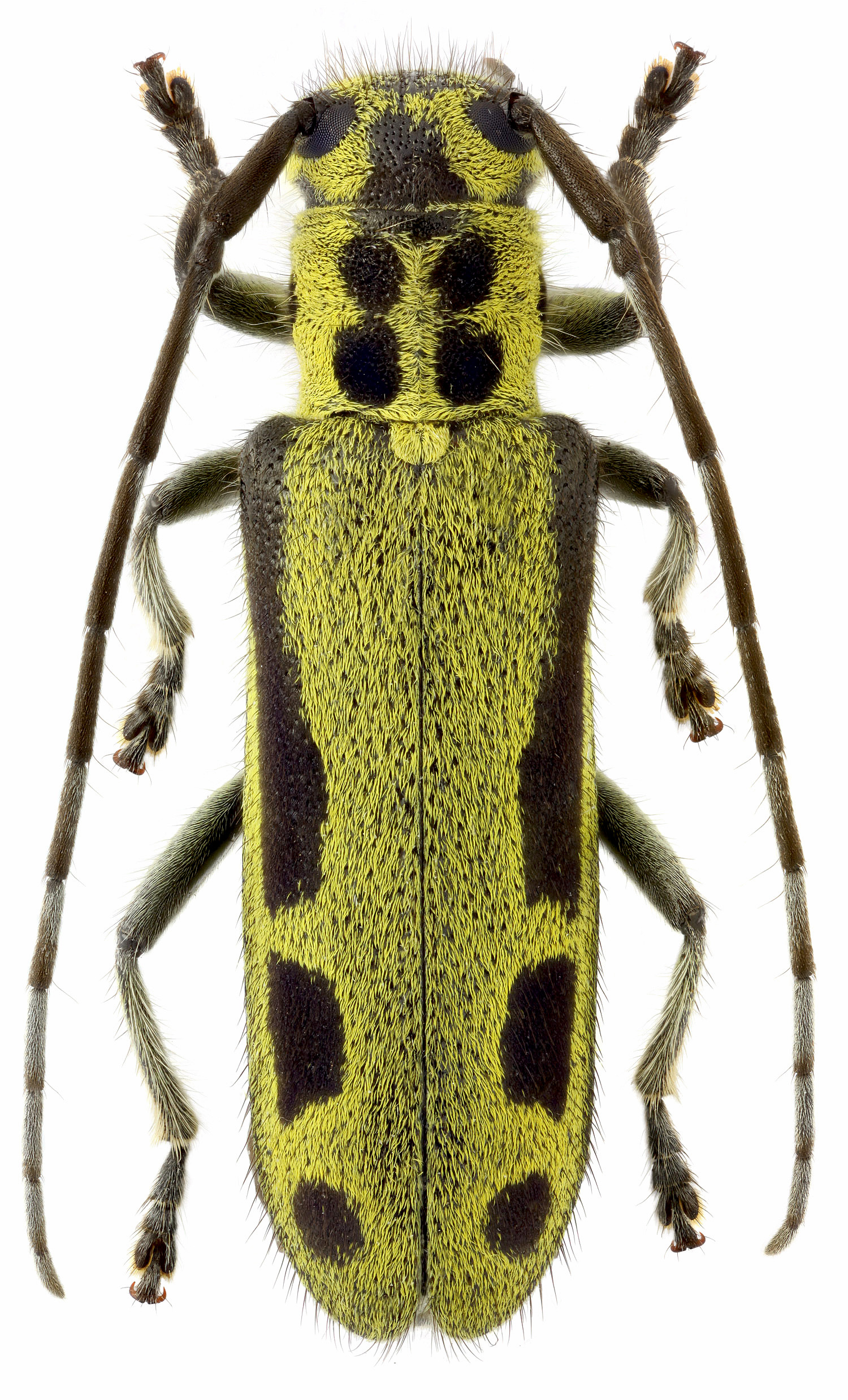Saperda interrupta, a beautiful species of montane and submontane coniferous ecosystems of North-East Asia (Russia, Mongolia, North China, Korea), has been
described from Siberia by Friedrich August Gebler in 1825 [▽]. S. interrupta larvae develop in both branches and trunks of dying or freshly dead conifers.
They feed subcortically, creating sinuous, often broad irregular expanding galleries longitudinal to the trunk, and pack them with coarse fibrous frass. The first overwintering under bark,
before the second one larvae enter the sapwood and create in the depth ca 2 cm hook-shaped pupal cell with entry corridor plugged with frass. Pupation and hatching in the next spring.
Life-cycle 2 years. Adults, active from June to July, can be found on the host trees where they feed on bark of thin shoots (maturation feeding) [✧].
| Body length: | 7 - 12 mm |
| Life cycle: | 2 years |
| Adults in: | June - July |
| Host plant: | polyphagous in coniferous trees (Picea, Abies, Pinus etc.) |
| Distribution: | Russia (Siberia, Far East), Mongolia, North China, Korea |
The depicted female beetle was collected in Lazo (Лазо́) village environs (Lazovsky district, Primorsky Krai, Far Eastern Federal District) on June 29 2010.
Collected by Maxim E. Smirnov
[▽]
Gebler F.A.:
IV. Coleopterorum Sibiriae Species Novae.
Essais Entomologiques 4: 42-57, 1825.
[download  ]
]
[✧]
Cherepanov A.I.:
Cerambycidae of Northern Asia, Volume 3 - Laminae Part III.
Oxonian Press, New Delhi: 395pp [pages 18-23] , 1991.
[download  ]
]


